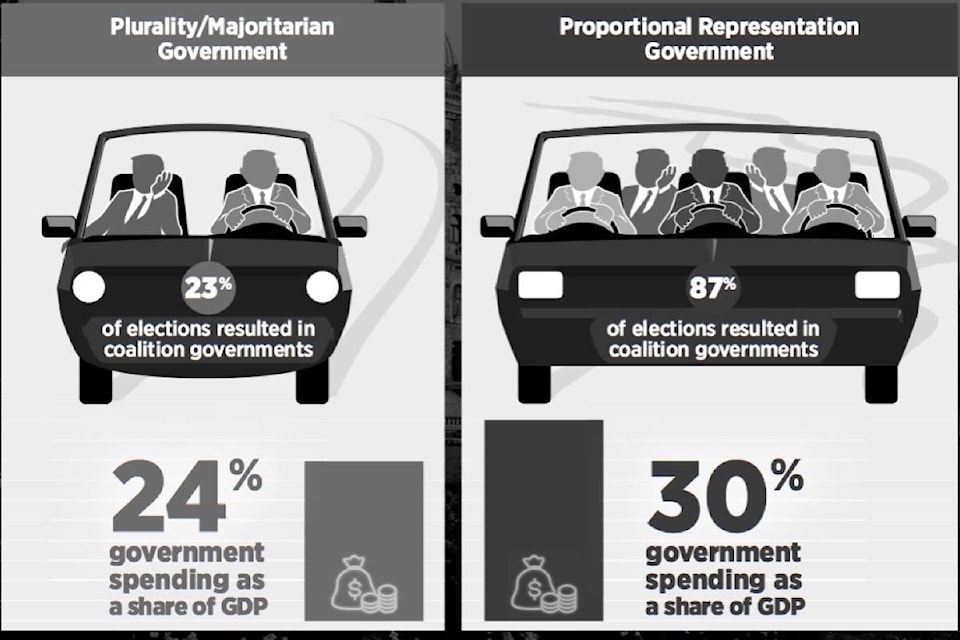Proportional representation doesn’t just lead to more parties and coalition governments, it produces more elections and more government spending, an analysis of its effect around the world has found.
Ballots are being mailed out to registered voters across B.C. next week, offering voters three alternative voting systems for a mail-in referendum that closes at the end of November.
University of Windsor political science professor Lydia Miljian surveyed the international literature on countries that have adopted various forms of proportional representation. Between 2004 and 2015, governments such as Greece, Denmark, Ireland, Israel, Portugal, Austria and Norway generally spent more of their Gross Domestic Product than governments such as Australia, France, Canada and the United States.
The difference is related to the larger number of parties, each making demands on the government to satisfy their areas of interest.
“Coalition governments – a staple of PR systems – regularly have to secure smaller, niche parties by funding their pet policy projects, which means more expensive government paid for by taxpayers,” said Miljan, a Fraser Institute senior fellow and co-author of the study, The Consequences of Electoral Reform in British Columbia.
B.C. Attorney General David Eby has decided the ballot will contain two questions, the first being a choice between the current “first past the post” system for choosing MLAs, and a proportional representation system.
RELATED: Premier agrees to debate on proportional representation
The second ballot question is a choice of three systems, two of which are untried. They are:
• Dual member proportional, where neighbouring pairs of districts in B.C. would be combined into one two-member constituencies, except for the larger rural districts, which would remain unchanged.
• Mixed member proportional, which combines single-member districts with party list candidates, added to give each party the number of seats determined by their share of the province-wide vote in an election.
• Rural-urban proportional representation, with multi-member districts for urban and semi-urban areas, with voters choosing their MLA on a ranked ballot. In rural areas, a mixed-member proportional system using candidate lists chosen by parties would be used.
The complexity of the options means voters will not have an official map of the new voting districts when they make their choice. Eby said if voters choose to change to a new system, the district boundaries would be determined by the independent Electoral Boundaries Commission.
@tomfletcherbc
tfletcher@blackpress.ca
Like us on Facebook and follow us on Twitter.
